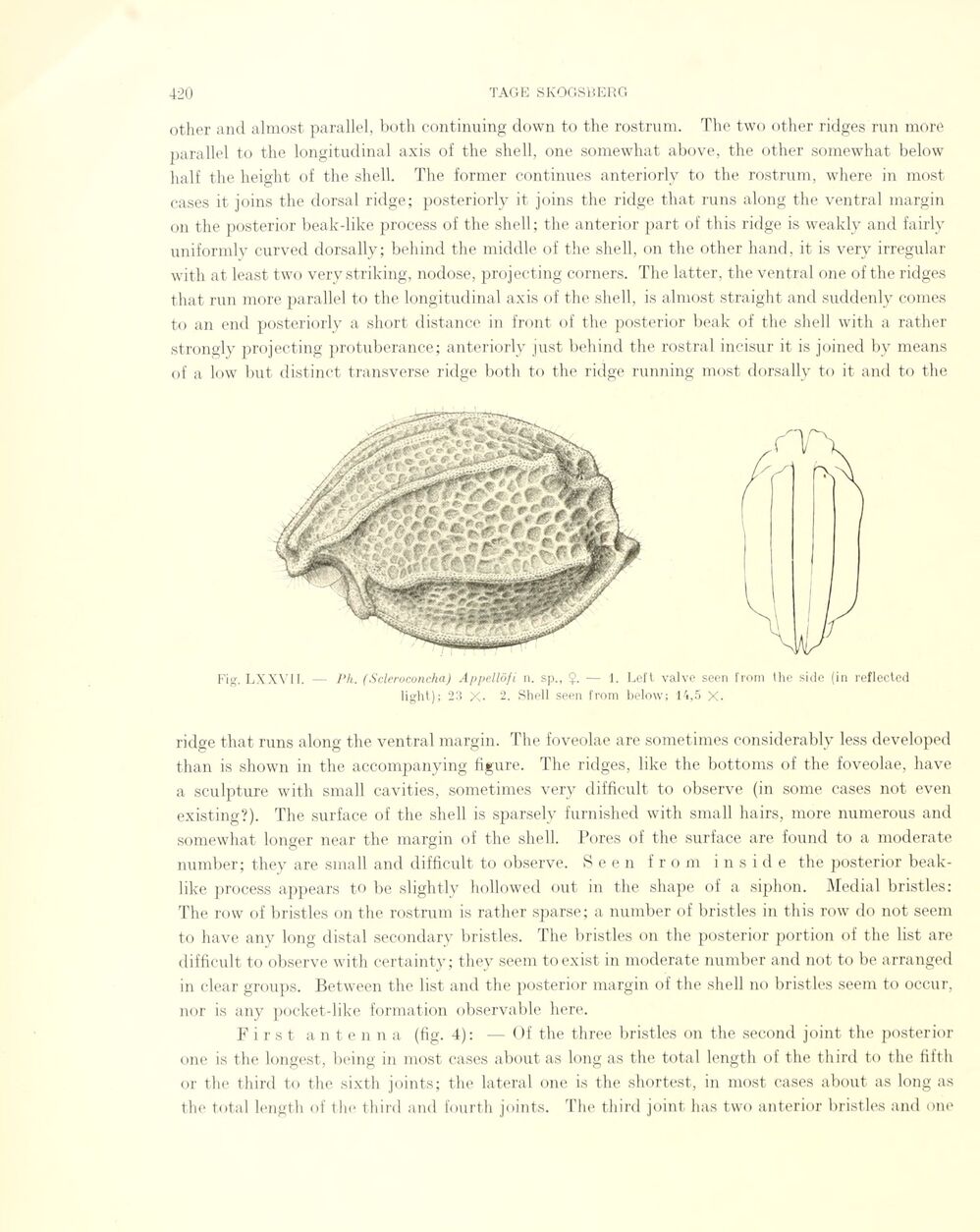
Full resolution (JPEG) - On this page / på denna sida - Sidor ...

<< prev. page << föreg. sida << >> nästa sida >> next page >>
Below is the raw OCR text
from the above scanned image.
Do you see an error? Proofread the page now!
Här nedan syns maskintolkade texten från faksimilbilden ovan.
Ser du något fel? Korrekturläs sidan nu!
This page has never been proofread. / Denna sida har aldrig korrekturlästs.
other and almost parallel, both continuing down to the rostrum. The two other ridges run more
parallel to the longitudinal axis of the shell, one somewhat above, the other somewhat below
half the height of the shell. The former continues anteriorly to the rostrum, where in most
cases it joins the dorsal ridge; posteriorly it joins the ridge that runs along the ventral margin
on the posterior beak-like process of the shell; the anterior part of this ridge is weakly and fairly
uniformly curved dorsally; behind the middle of the shell, on the other hand, it is verv irregulär
with at least two very striking, nodose, projecting corners. The latter, the ventral one of the ridges
that run more parallel to the longitudinal axis of the shell, is almost straight and suddenly comes
to an end posteriorly a short distance in front of the posterior beak of the shell with a rather
strongly projecting protubérance; anteriorly just behind the rostral incisur it is joined by means
of a low but distinct transverse ridge both to the ridge running most dorsally to it and to the
Fig. LXXYII. — Ph. (Scleroconcha) Appellôfi n. sp., Ç. — 1. Loft valve seen from lhe side (in reflectcd
light); 23 X. 2. Shell seen from below; 14,5 X.
ridge that runs along the ventral margin. The foveolae are sometimes considerably less developed
than is shown in the accompanying figure. The ridges, like the bottoms of the foveolae, have
a sculpture with small cavities, sometimes very difficult to observe (in some cases not even
existing?). The surface of the shell is sparsely furnished with small hairs, more numerous and
somewhat longer near the margin of the shell. Pores of the surface are found to a moderate
number; they are small and difficult to observe. S e e n from inside the posterior
beak-like process appears to be slightly hollowed out in the shape of a siphon. Medial bristles:
The row of bristles on the rostrum is rather sparse; a number of bristles in this row do not seem
to have any long distal secondary bristles. The bristles on the posterior portion of the list are
difficult to observe with certainty; they seem toexist in moderate number and not to be arranged
in clear groups. Between the list and the posterior margin of the shell no bristles seem to occur,
nor is any pocket-like formation observable here.
First antenna (fig. 4): — Of the three bristles on the second joint the posterior
one is the longest, being in most cases about as long as the total length of the third to the fifth
or the third to the sixth joints; the lateral one is the shortest, in most cases about as long as
the total length of the third and fourth joints. The third joint has two anterior bristles and one
<< prev. page << föreg. sida << >> nästa sida >> next page >>